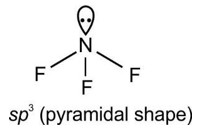If the electronic configuration of an element is 1s2 2s2 2p6 3s2 3p6 3d2 4s2, the four electrons involved in chemical bond formation will be_____.
(i) 3p6
(ii) 3p6, 4s2
(iii) 3p6, 3d2
(iv) 3d2, 4s2
If the electronic configuration of an element is 1s2 2s2 2p6 3s2 3p6 3d2 4s2, the four electrons involved in chemical bond formation will be_____.
(i) 3p6
(ii) 3p6, 4s2
(iii) 3p6, 3d2
(iv) 3d2, 4s2
-
1 Answer
-
This is a Multiple Choice Questions as classified in NCERT Exemplar
Ans: Option (iv)
The electrons involved in the formation of any chemical bond are the valence shell electrons. In the given electronic configuration,1s2 2s2 2p6 3s2 3d2 4s2 the valence shell electrons are in d-orbital and s-orbital. So, the four electrons involved in the chemical bond formation will be 3d2 4s2.
Similar Questions for you
He2 has zero bond order hence it does not exist.
The three fundamental laws of chemistry are - Law of Definite Proportions, Law of Conservation of Mass, and Law of Multiple Proportions.
The three types of chemical bonds are - ionic, metallic and covalent bonds. When the electrons transfer between the atoms, they form the Ionic bonds by producing charged ions that are attracted to each other. When atoms share electrons, covalent bonds are created. When metal atoms share a sea of delocalized electrons, metallic bonds get created.
Taking an Exam? Selecting a College?
Get authentic answers from experts, students and alumni that you won't find anywhere else
Sign Up on ShikshaOn Shiksha, get access to
- 66k Colleges
- 1.2k Exams
- 680k Reviews
- 1800k Answers


